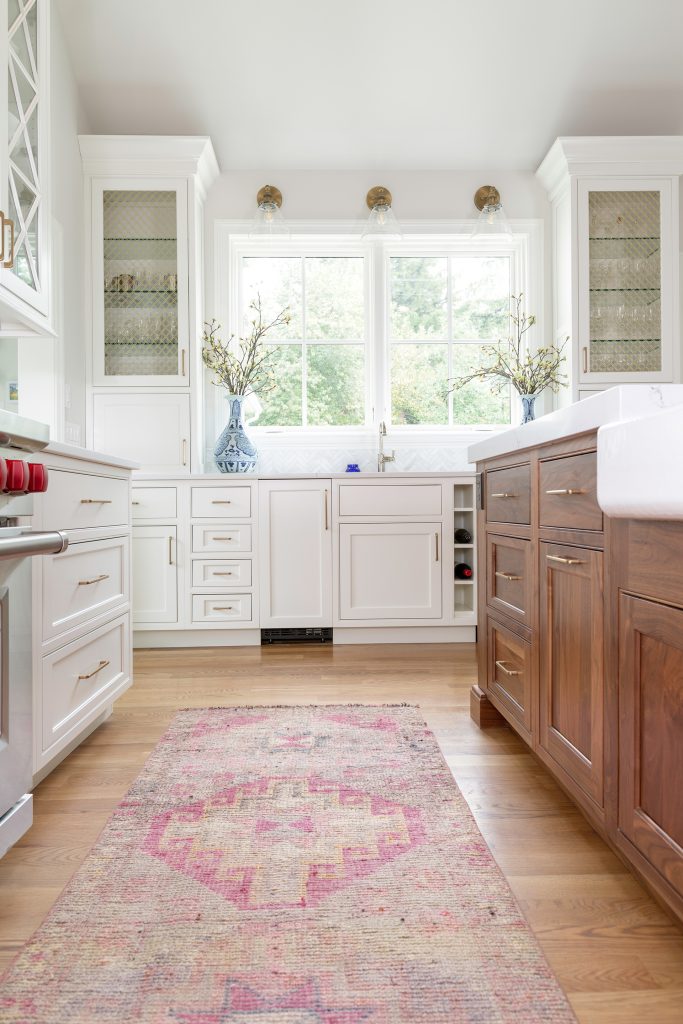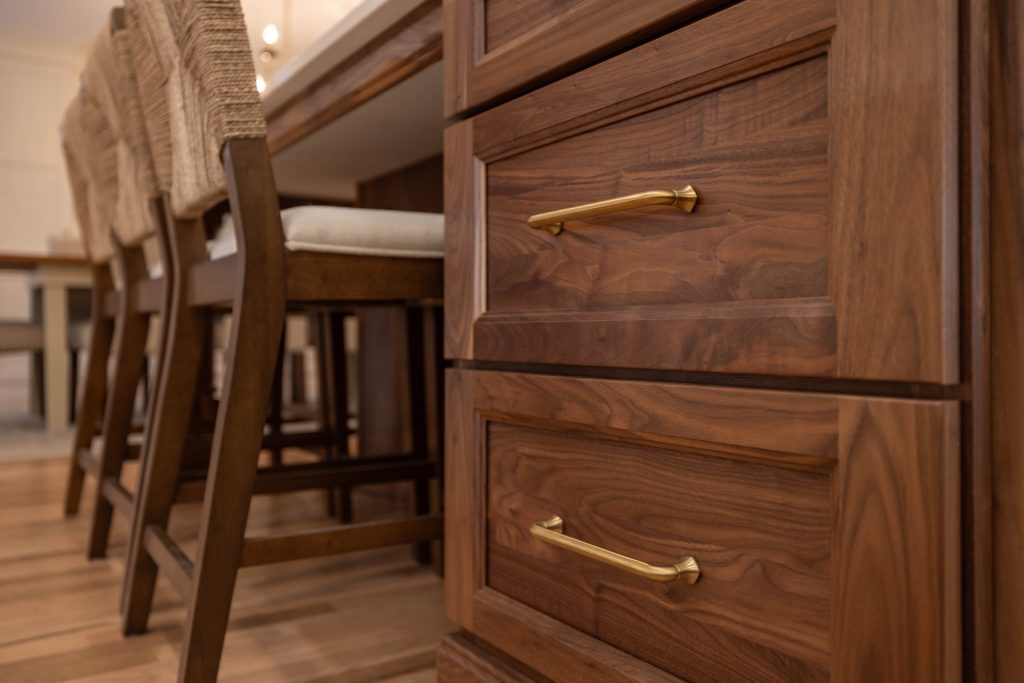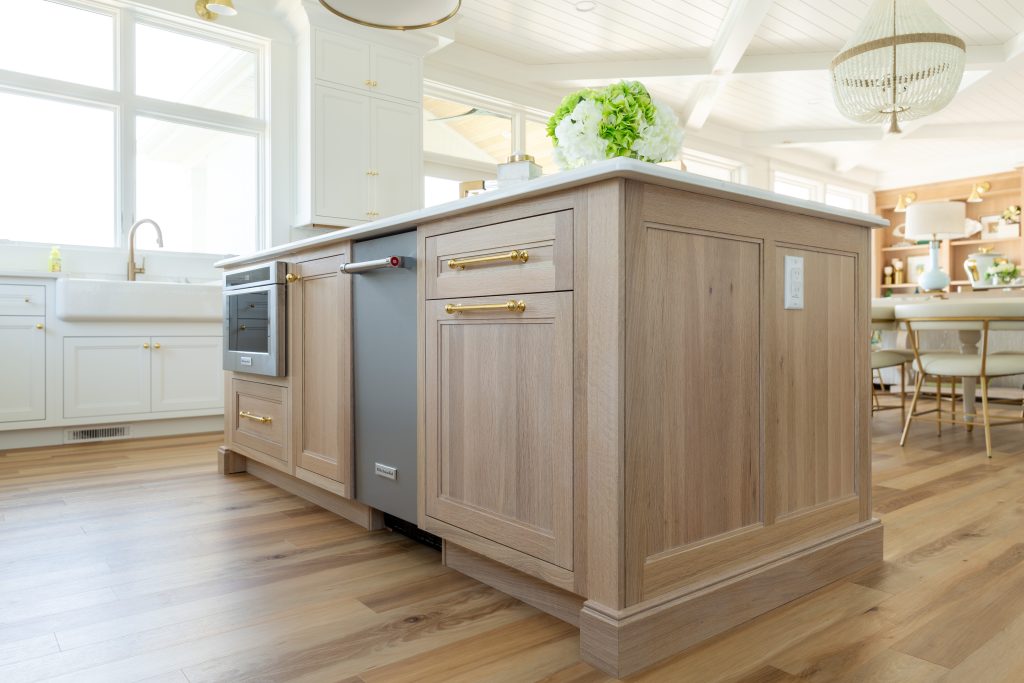Elevate your kitchen with bold contrast, balance, and personality.
Two-tone cabinetry is one of the easiest ways to bring depth, style, and a designer feel into your kitchen—without going full custom. But it’s also one of those trends that’s easy to get almost right. The key is knowing how to balance contrast, tone, and texture like a pro.
Here’s your go-to guide to mixing cabinet colors with confidence.
1. Start With the 60/40 Rule
To keep your kitchen looking intentional (not patchwork), let one cabinet finish lead the way.
- 60% dominant color – usually on the base cabinets or the main run
- 40% accent color – often on upper cabinets, an island, or a pantry wall
This ratio keeps the design visually grounded while still allowing room for contrast and personality.

2. Go Dark on the Bottom, Light on Top
This is a tried-and-true formula that works in almost any kitchen.
Why it works:
- Darker base cabinets anchor the space and hide scuffs from daily use
- Lighter uppers keep things feeling open and bright
- The contrast draws the eye up and across the kitchen—making it feel larger
Popular combos:
- Navy lowers + white uppers
- Deep green base + soft greige above
- Charcoal base cabinets + warm white top cabinets

3. Pair Wood Tones With Paint Colors Thoughtfully
If you love natural wood grain, pairing it with painted cabinetry adds a modern, layered effect.
Tips for mixing wood + color:
- Choose one dominant tone (cool or warm) and keep both finishes in the same family
- Lighter wood (like white oak) pairs beautifully with cool greys, muted blues, or sage
- Darker woods (like walnut or stained oak) look stunning with matte black, olive green, or cream
- Avoid mixing red-toned woods with cooler colors—it can feel mismatched
Want it to look elevated? Stick to a low-sheen finish across both.

4. Don’t Forget the Hardware
Your cabinet hardware is the bridge between two tones. Choose a finish that works with both cabinet colors to tie the palette together.
Examples:
- Brushed brass with navy + white
- Matte black with oak + soft grey
- Polished nickel with charcoal + cream
Bonus: If you’re going wood + color, consider matching your hardware to your wood tone—it’ll bring unexpected harmony to the whole space.

5. Use the Island as a Statement Piece
If you’re hesitant to go all-in on two-tone cabinetry, the island is the perfect place to start. It’s contained, visible, and easy to switch up if tastes change.
Designer tip: Make your island finish feel intentional by repeating that color somewhere else—open shelves, barstools, or even accessories.

6. Balance With Backsplash and Countertops
When mixing cabinet colors, you need a few neutral anchors in the space.
Go for:
- A light, simple backsplash that won’t compete with bold cabinetry
- A countertop that works with both tones (like soft marble, white quartz, or butcher block)
- Minimal visual clutter—let the cabinetry do the talking

Your Kitchen. Your Style. Perfectly Pulled Together.
Mixing cabinet colors isn’t just a design trend—it’s a way to bring depth, personality, and intention into your home. Whether you’re leaning into bold contrast or soft tonal shifts, two-tone cabinetry adds that “custom” feel without overcomplicating the design.

